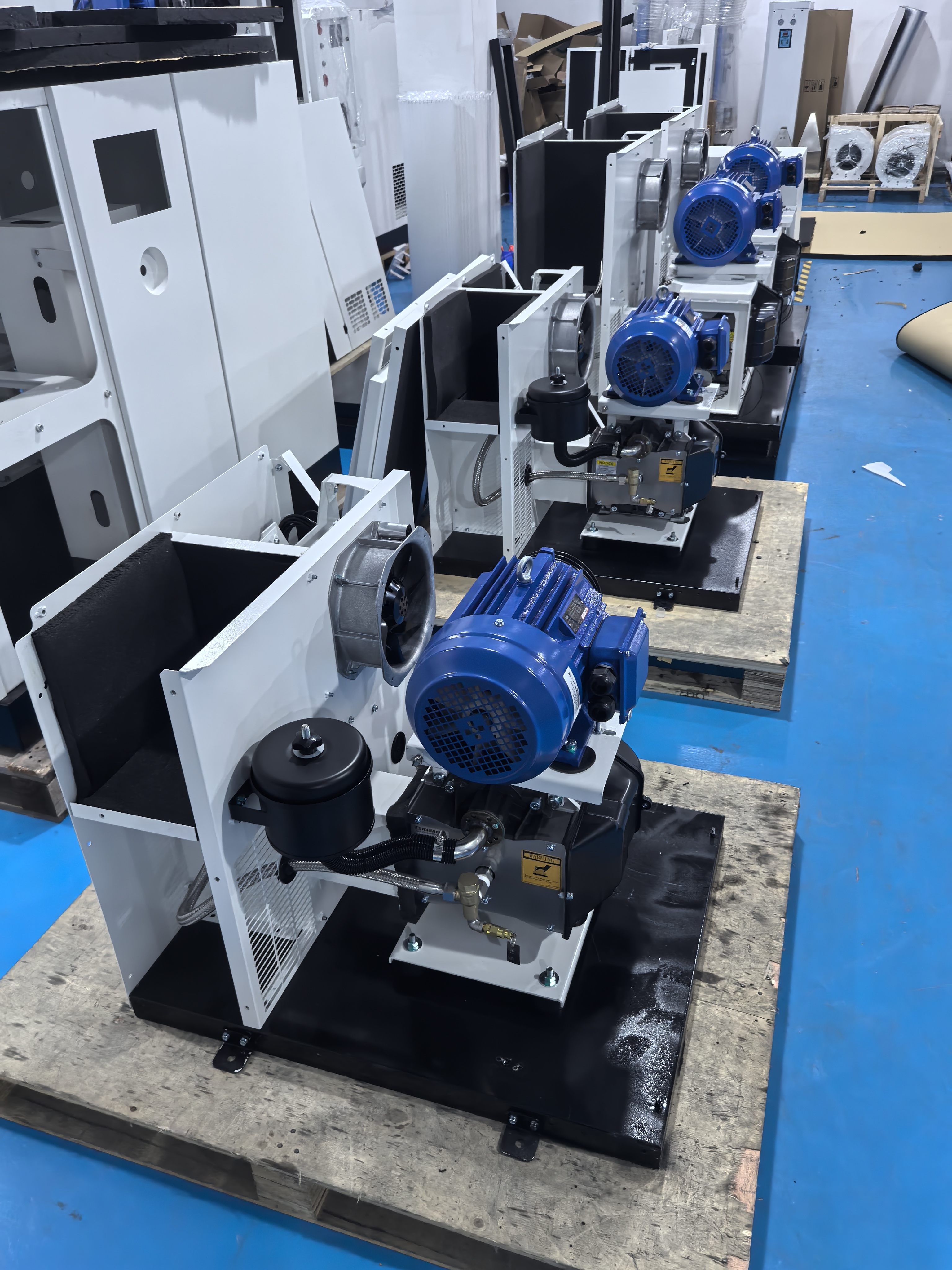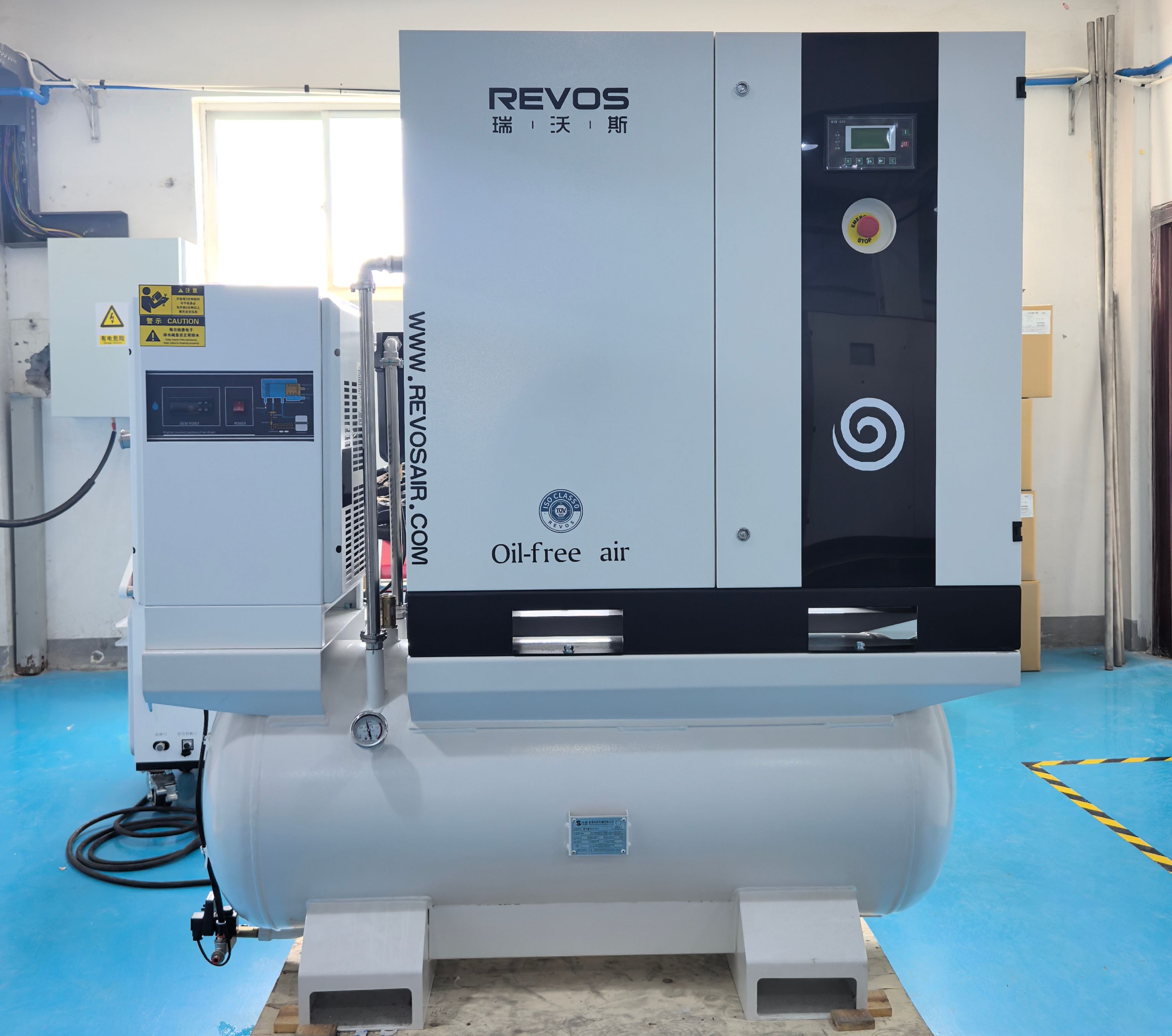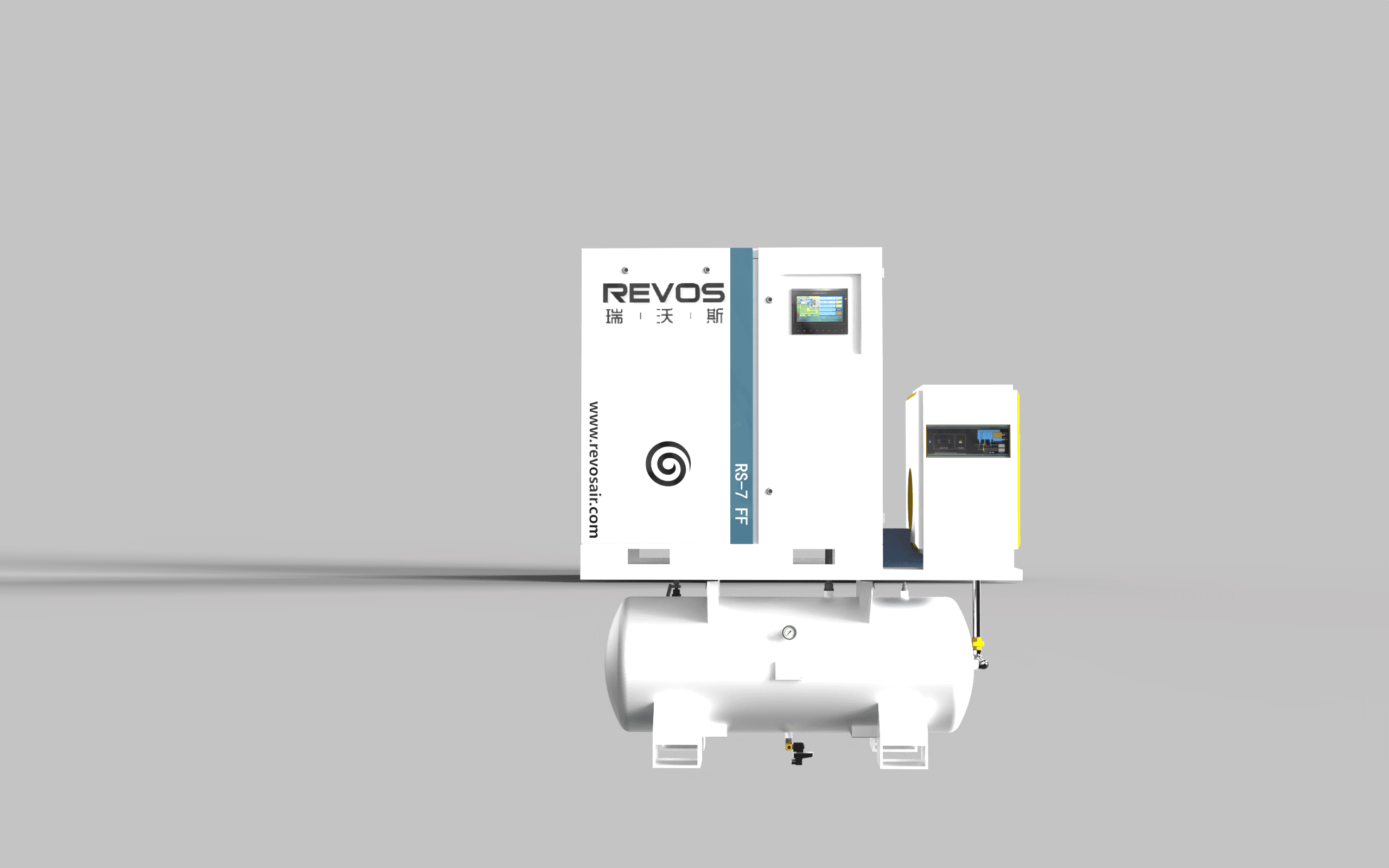In pharmaceutical manufacturing, product integrity directly impacts patient safety. Compressed air systems play a critical yet often overlooked role in this equation. As someone with extensive experience implementing cleanroom solutions, I've seen how the right air compressor technology transforms production reliability while ensuring regulatory compliance. This guide draws on real-world applications and 2025 industry standards to provide pharmaceutical manufacturers a step-by-step framework for implementing oil-free compressors in clean room environments.
Understanding Pharmaceutical Clean Room Air Requirements
The pharmaceutical industry faces unique compressed air system challenges. Unlike general industrial applications, compressed air in pharmaceutical manufacturing often contacts active pharmaceutical ingredients (APIs), excipients, and final products directly. This critical interface demands the highest air purity levels to prevent contamination and ensure patient safety.

Regulatory Compliance Framework
The 2025 regulatory landscape for pharmaceutical clean rooms has evolved to address emerging contamination risks. The revised ISO 14644-5:2025 standard now specifies enhanced operational requirements for cleanroom environments, including stricter monitoring protocols for compressed air systems. Compliance with ISO 8573-1 Class O certification remains the gold standard, representing the highest level of oil-free air purity with zero detectable oil content—both in aerosol, liquid, and vapor forms.
Regulatory bodies including the FDA and EMA have reinforced these standards through updated guidance documents emphasizing validated compressed air systems. The latest FDA Process Validation guidance states pharmaceutical manufacturers must implement a risk-based approach to compressed air quality, with particular attention to points where compressed air contacts product or critical surfaces.
Contamination Risks and Consequences
Inadequate compressed air quality in pharmaceutical production can have severe consequences. A 2024 study in Pharmaceutical Technology documented 17 product recalls directly attributed to compressed air contamination over three years, resulting in over $500 million in losses. These incidents highlight why maintaining oil-free air matters in processes from API synthesis to final packaging.
Oil contamination represents the most significant risk. Even minute quantities can compromise product stability and safety. Hydrocarbon residues from lubricated compressors have been linked to API degradation and immunogenic responses in finished pharmaceutical products. Particulate matter and microbial contamination in compressed air also cause batch failures and costly production downtime.
Technical Considerations for Oil-Free Compressor Selection
Selecting the right oil-free compressor system requires evaluating both technical specifications and application requirements. Based on years of industry experience, certain critical factors consistently determine successful pharmaceutical clean room integration.
Technology Comparison: Oil-Free Options
Pharmaceutical manufacturers have several oil-free technologies to consider, each with distinct advantages depending on specific needs:
Oil-Free Scroll Compressors work well for small to medium capacity requirements (typically 1-20 HP). Their compact footprint and quiet operation have made them popular choices. The scroll design uses intermeshing spirals to compress air without lubrication, achieving ISO 8573-1 Class 0 certification with proper air treatment. These units excel in laboratory settings and small-scale production environments.
Oil-Free Screw Compressors offer higher capacity ranges (20-500+ HP) suitable for large manufacturing facilities. Recent rotor coating technology advancements have improved efficiency and reliability, with some models delivering up to 15% energy savings compared to previous generations. The latest designs feature integrated air drying and filtration systems specifically engineered for pharmaceutical applications.
Oil-Free Centrifugal Compressors represent the premium solution for very high-capacity requirements, often found in large-scale API production facilities. These units use dynamic compression through impellers, offering oil-free operation with exceptional reliability and low maintenance needs. While requiring higher initial investment, they provide superior lifecycle cost benefits for continuous-duty applications.

Critical Performance Parameters
When evaluating oil-free compressors for pharmaceutical clean rooms, several performance parameters demand careful consideration:
Air Quality Certification should include not just ISO 8573-1 Class 0 for oil, but also particulate and moisture specifications. The most stringent pharmaceutical applications typically require ISO 8573-1:2010 Class 0 for oil, Class 1 for particles (≤0.1μm), and Class 2 for moisture (-40°C pressure dew point).
Energy Efficiency has grown more important as pharmaceutical manufacturers focus on sustainability and operational cost reduction. Variable Speed Drive (VSD) technology can deliver 30% energy savings compared to fixed-speed compressors by matching output to actual demand. The latest VSD models feature advanced controls that integrate with building management systems for optimized performance.
Reliability Metrics including Mean Time Between Failures (MTBF) and Mean Time To Repair (MTTR) are critical for pharmaceutical production environments. Unplanned downtime can have significant financial and regulatory consequences. Look for compressors with MTBF ratings exceeding 40,000 hours for critical production applications.
Noise Levels should be evaluated for compliance with occupational health standards and to prevent interference with sensitive laboratory equipment. Oil-free scroll compressors typically operate at 60-75 dBA, while larger screw compressors may require acoustic enclosures to maintain acceptable noise levels in clean room environments.
Medical Grade Air Compressors Case Studies: Real-World Applications
Real-world examples provide valuable insights into successful oil-free compressor integration in pharmaceutical clean rooms. These case studies illustrate different approaches to common challenges, highlighting best practices and lessons learned across various production scenarios.
API Manufacturing Facility Implementation
A leading global pharmaceutical company specializing in oncology treatments upgraded their API production facility with oil-free compressors in 2024. The project replaced aging lubricated compressors to meet evolving regulatory requirements and support expanded production capacity.
The facility engineering team selected oil-free screw compressors with integrated desiccant dryers and multi-stage filtration. Maintaining consistent pressure dew points of -40°C during peak production periods was critical to ensure product stability during sensitive crystallization processes. The system included N+1 redundancy to eliminate single points of failure—a requirement identified through thorough risk assessment.
Implementation challenges included integrating new compressors with existing clean room HVAC systems while maintaining ISO 7 classification during transition. The solution involved phased installation with temporary redundant systems, allowing continuous production throughout the upgrade. Post-implementation testing confirmed the system consistently delivered ISO 8573-1 Class 0 air quality with 28% reduced energy consumption compared to previous lubricated compressors.
"Our decision to invest in premium oil-free technology has paid dividends in both regulatory compliance and operational efficiency," noted the facility's engineering manager. "We've eliminated oil-related contamination risks while achieving significant energy savings that will provide ROI within 30 months."
Biologics Production Application
A biotechnology company producing monoclonal antibodies implemented a specialized oil-free compressed air system for their fill-finish operations in 2025. The application required ultra-clean compressed air for vial cleaning and sealing processes in an ISO 5 clean room environment.

The project team selected oil-free scroll compressors paired with advanced air treatment systems, including membrane dryers and HEPA filtration. Minimizing microbial contamination risk was a key consideration, addressed through heatless regenerative dryers and continuous monitoring systems with automated alerts for any parameter deviation.
Unique challenges included managing pressure fluctuations during batch changeovers and maintaining strict particulate counts in the critical filling zone. The solution featured variable speed compressors with precision pressure control and dedicated air lines to the filling suite, isolated from general facility compressed air systems.
Validation testing confirmed the system maintained ISO 8573-1 Class 0 oil purity, with particulate counts consistently below ISO 14644-1 Class 5 requirements. The implementation also included a comprehensive monitoring program with daily particle counting, weekly oil testing, and monthly microbial sampling—providing the data required for regulatory compliance.
Hospital Air Compressor Systems Implementation
A major hospital system upgraded its medical air supply with oil-free compressor technology to enhance patient safety and system reliability. The hospital required continuous, high-quality compressed air for surgical tools, respiratory therapy, and critical care applications.
The implementation featured redundant oil-free piston compressors configured in a modular system to ensure uninterrupted supply. Key requirements included ISO 10993 biocompatibility certification, NFPA 99 compliance, and integration with hospital emergency power systems. The design prioritized infection control with stainless steel piping and specialized microbial filtration.
Installation occurred during planned maintenance periods to avoid service disruption. The project included comprehensive staff training and a transition plan for clinical personnel. Post-implementation monitoring demonstrated 99.99% system availability with air quality consistently exceeding medical grade requirements.
"The new oil-free compressor system has transformed our medical air supply reliability," reported the hospital's director of facilities. "We've eliminated contamination concerns while reducing maintenance requirements and improving energy efficiency across our campus."
Installation and Validation Best Practices
Proper installation and validation of oil-free compressor systems are critical for reliable performance and regulatory compliance in pharmaceutical clean room environments. A structured approach significantly reduces implementation risks and ensures long-term operational success.
System Design and Layout Considerations
Effective compressed air system design begins with comprehensive assessment of air quality requirements and usage patterns. "Many pharmaceutical manufacturers underestimate the importance of proper system layout," notes an industry expert with over 20 years of clean room design experience. "Poorly designed distribution systems can compromise even the highest quality compressed air at the point of use."
Key design considerations include:
Pipe Sizing and Material Selection should follow ASME B31.1 standards. Pharmaceutical applications typically use stainless steel piping to prevent corrosion and contamination. Pipe sizing must account for both velocity (ideally 20-30 ft/s for dry air) and pressure drop (maximum 10% from compressor to point of use).
Distribution System Configuration should employ a loop design where possible to ensure pressure stability and redundant supply paths. Critical production areas need dedicated branches with isolation valves to allow maintenance without disrupting entire production lines.
Air Treatment Placement requires careful consideration of filtration sequence and location. Pre-filtration should be positioned immediately after the compressor, with final filtration as close to the point of use as possible to minimize contamination risks in distribution lines.
Condensate Management systems must prevent cross-contamination, with dedicated drains for each stage of air treatment. Pharmaceutical facilities should specify zero-loss drains to prevent both product contamination and compressed air waste.
Validation Protocol Development
Compressed air system validation requires a structured approach documenting compliance with internal specifications and regulatory requirements.
A comprehensive validation protocol should include:
Installation Qualification (IQ) documenting correct installation according to approved specifications. This includes verification of all components, piping materials, electrical connections, and safety features.
Operational Qualification (OQ) demonstrating correct system operation under all anticipated conditions—normal operation, startup/shutdown sequences, and upset conditions. OQ should include testing at minimum, maximum, and nominal operating parameters.
Performance Qualification (PQ) confirming consistent delivery of compressed air meeting specified quality standards over an extended period, typically three consecutive production batches or 30 days of continuous operation.
Sampling and Testing Procedures should follow ISO 8573 standards, with particular attention to sampling point locations representative of actual air quality at the point of product contact. Testing frequency should increase during initial validation, with gradual reduction based on demonstrated system stability.
Healthcare Clean Air Solutions: Emerging Trends
The healthcare and pharmaceutical compressed air landscape continues to evolve, driven by regulatory changes, technological innovations, and sustainability initiatives. Industry professionals must stay informed to make strategic decisions balancing compliance, performance, and operational efficiency.
Emerging Technology Developments
2025 has brought several notable advancements in oil-free compressor technology for pharmaceutical and healthcare applications:
IoT-Enabled Monitoring Systems have transformed compressed air management, providing real-time data on performance parameters and air quality. These systems use advanced sensors and cloud-based analytics to identify potential issues before they impact production, enabling predictive maintenance and reducing unplanned downtime. Leading manufacturers now offer integrated monitoring platforms providing compliance reporting and trend analysis, simplifying regulatory documentation.
Energy Recovery Systems have become more sophisticated, capturing waste heat from compressors for facility heating or process applications. Recent installations demonstrate energy recovery efficiencies exceeding 75%, significantly reducing overall facility carbon footprint while generating substantial cost savings.
Advanced Materials are enhancing both performance and reliability of oil-free compressors. New composite materials for components reduce weight while improving durability, extending maintenance intervals and increasing system lifespan. Ceramic coatings on critical components have shown promise in reducing friction and improving efficiency in oil-free screw compressors.
Regulatory Evolution Impact
Regulatory requirements continue shaping compressed air system design and operation. The 2025 revision of ISO 14644-5 introduced enhanced requirements for cleanroom operational controls, including more rigorous monitoring of compressed air systems serving critical manufacturing areas.
"The new ISO standard reflects growing regulatory focus on process understanding and continuous improvement," explains a compliance expert with the International Society for Pharmaceutical Engineering (ISPE). "Pharmaceutical manufacturers should expect increased scrutiny of their compressed air systems during inspections, with particular attention to monitoring data and trending analysis."
The FDA's ongoing emphasis on Quality by Design (QbD) principles drives more comprehensive characterization of compressed air systems. This includes better understanding of how compressed air quality impacts product attributes and implementing appropriate controls based on that understanding.
Sustainability Initiatives
Environmental sustainability has become a key driver in compressed air system design and operation. Pharmaceutical companies increasingly set ambitious carbon reduction targets, with compressed air systems representing significant opportunity for energy efficiency improvements.
Variable Speed Technology has matured to provide greater energy savings. The latest systems adjust compressor output in real-time to match demand fluctuations. Combined with advanced control algorithms, these systems achieve energy savings of 35% or more compared to fixed-speed compressors in variable-demand applications.
System Optimization has emerged as a critical sustainability strategy. Comprehensive audits identify opportunities for pressure reduction, leak elimination, and improved air treatment efficiency. A 2025 study by the Compressed Air and Gas Institute found optimized systems typically reduce energy consumption by 20-40% while maintaining or improving air quality.
Conclusion and Implementation Roadmap
Implementing oil-free compressor systems in pharmaceutical clean rooms represents a significant investment in product quality, regulatory compliance, and operational efficiency. A structured approach ensures successful outcomes and maximizes return on investment.
Implementation Steps Summary
The following implementation roadmap provides a structured approach to oil-free compressor system integration:
- Needs Assessment and Planning (2-4 weeks)
- Conduct comprehensive air quality requirement analysis
- Map compressed air usage points and patterns
- Establish budget parameters and ROI expectations
- Form cross-functional project team (engineering, quality, production)
- Technology Evaluation and Selection (4-6 weeks)
- Develop detailed technical specifications
- Evaluate vendor proposals and references
- Conduct site visits to similar installations
- Perform cost-benefit analysis of competing technologies
- Select equipment and develop preliminary design
- System Design and Engineering (6-8 weeks)
- Develop detailed system layout and piping design
- Specify air treatment components and monitoring systems
- Complete electrical and control system design
- Develop validation protocol and acceptance criteria
- Obtain regulatory review and approval if required
- Installation and Commissioning (4-8 weeks)
- Schedule installation to minimize production disruption
- Verify installation against approved design
- Perform initial startup and safety checks
- Conduct functional testing of all system components
- Train operators and maintenance personnel
- Validation and Qualification (4-6 weeks)
- Execute installation qualification (IQ)
- Perform operational qualification (OQ)
- Complete performance qualification (PQ)
- Document all validation activities and results
- Obtain quality assurance approval for production use
- Ongoing Monitoring and Optimization (continuous)
- Implement preventive maintenance program
- Conduct regular air quality testing and monitoring
- Analyze performance data for improvement opportunities
- Stay current with regulatory changes and technological advancements
Final Recommendations
Based on extensive industry experience implementing oil-free compressor systems in pharmaceutical environments, several key recommendations emerge:
Invest in Quality and Reliability – While initial cost considerations matter, long-term costs of system failures or non-compliance far outweigh upfront savings from inferior equipment. Premium oil-free compressors with proven pharmaceutical applications typically provide better lifecycle value and regulatory assurance.
Implement Comprehensive Monitoring – Real-time air quality and system performance monitoring provides early warning of potential issues while creating the documentation trail required for regulatory compliance. The investment in monitoring technology typically pays for itself through reduced downtime and compliance assurance.
Plan for Future Expansion – Design systems with sufficient capacity for anticipated growth and changing production requirements. Modular approaches often provide the best balance between initial investment and future flexibility.
Prioritize Energy Efficiency – Energy consumption represents a significant portion of total compressor lifecycle costs. Features like variable speed drives and energy recovery systems deliver substantial long-term savings while supporting sustainability goals.
Develop Expertise – Ensure your team has proper training on system operation, maintenance requirements, and quality monitoring. Consider partnering with specialized service providers for complex maintenance tasks requiring specific expertise.
By following this implementation roadmap and recommendations, pharmaceutical manufacturers can successfully integrate oil-free compressor systems that provide reliable performance, regulatory compliance, and optimal total cost of ownership for clean room applications.
